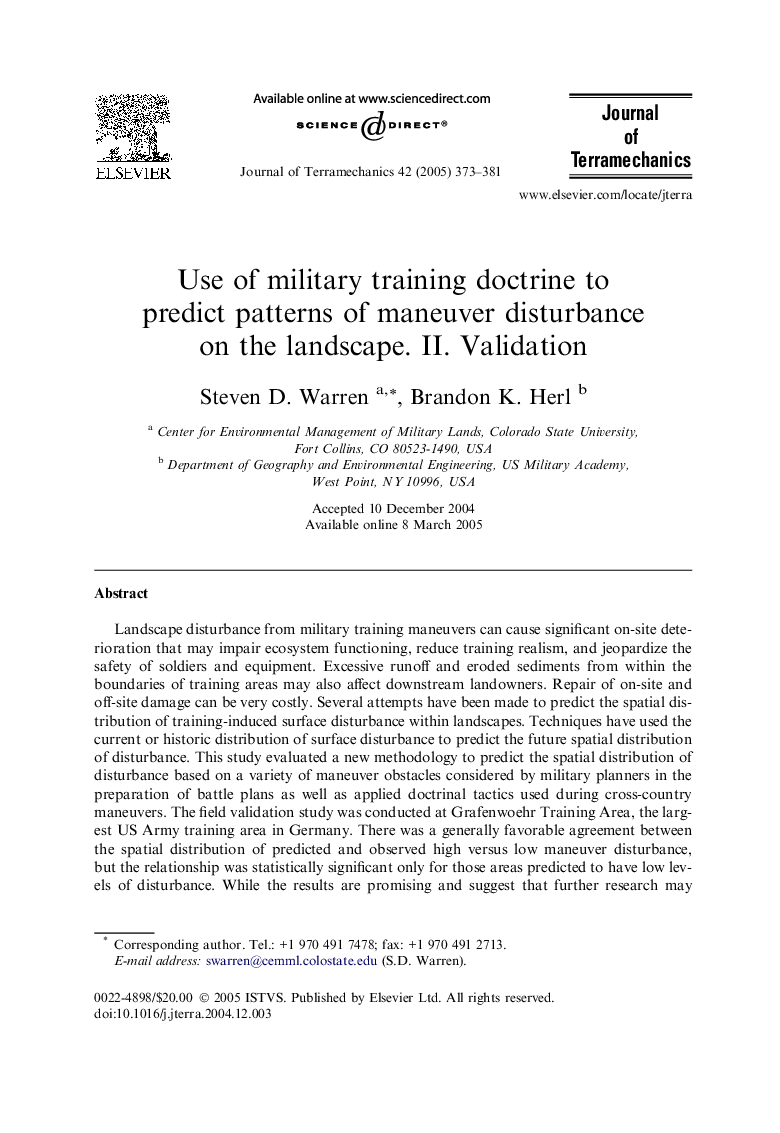| Article ID | Journal | Published Year | Pages | File Type |
|---|---|---|---|---|
| 9711569 | Journal of Terramechanics | 2005 | 9 Pages |
Abstract
Landscape disturbance from military training maneuvers can cause significant on-site deterioration that may impair ecosystem functioning, reduce training realism, and jeopardize the safety of soldiers and equipment. Excessive runoff and eroded sediments from within the boundaries of training areas may also affect downstream landowners. Repair of on-site and off-site damage can be very costly. Several attempts have been made to predict the spatial distribution of training-induced surface disturbance within landscapes. Techniques have used the current or historic distribution of surface disturbance to predict the future spatial distribution of disturbance. This study evaluated a new methodology to predict the spatial distribution of disturbance based on a variety of maneuver obstacles considered by military planners in the preparation of battle plans as well as applied doctrinal tactics used during cross-country maneuvers. The field validation study was conducted at Grafenwoehr Training Area, the largest US Army training area in Germany. There was a generally favorable agreement between the spatial distribution of predicted and observed high versus low maneuver disturbance, but the relationship was statistically significant only for those areas predicted to have low levels of disturbance. While the results are promising and suggest that further research may enhance the methodology, the allocation of funding for land rehabilitation on military training lands based on a priori prediction of the spatial distribution of surface disturbance is not yet practical.
Keywords
Related Topics
Physical Sciences and Engineering
Earth and Planetary Sciences
Geotechnical Engineering and Engineering Geology
Authors
Steven D. Warren, Brandon K. Herl,
